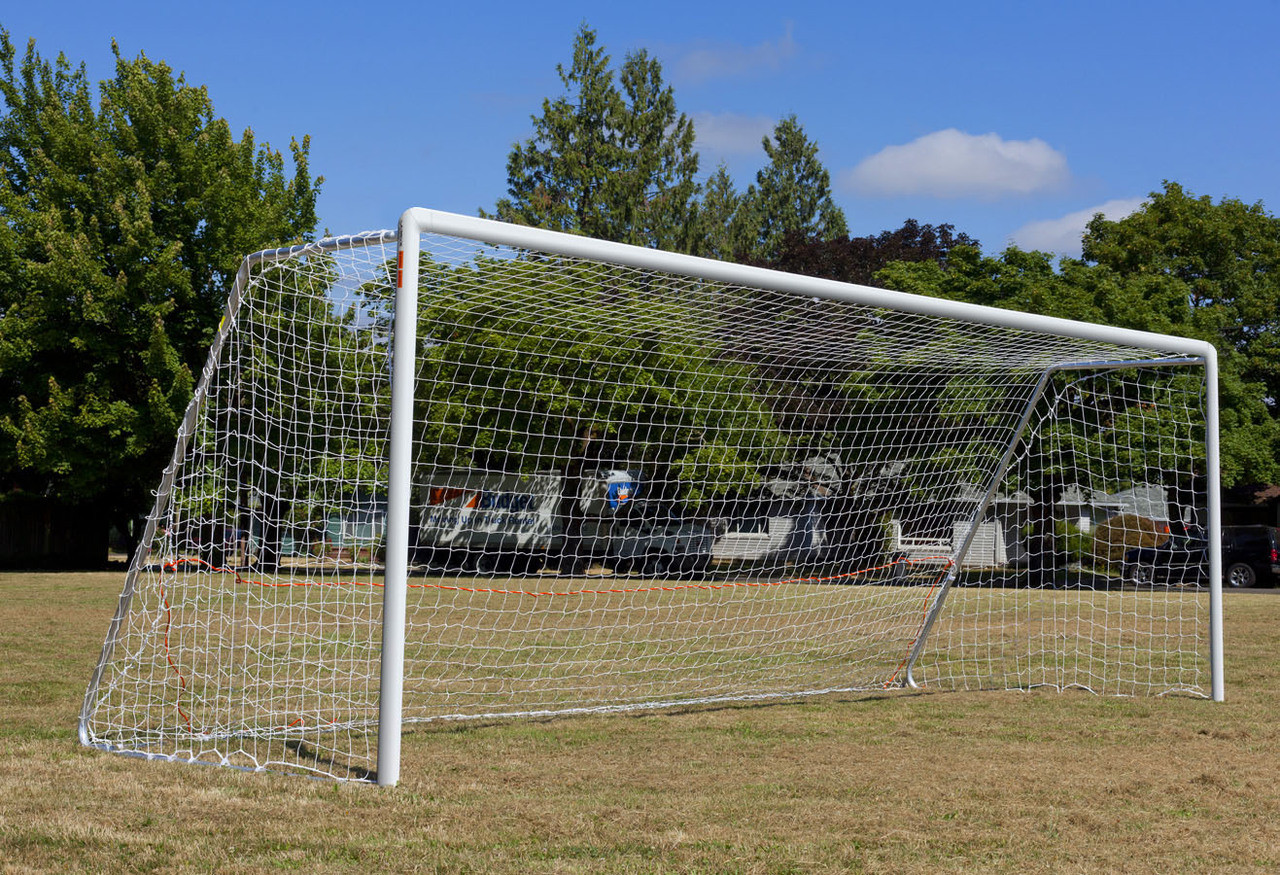How Big Is A Regulation Soccer Goal
A regulation soccer goal is an essential component of any soccer match. It provides the target for players to aim at, and scoring a goal is the ultimate objective of the game. In this article, we will explore the dimensions of a regulation soccer goal, its importance in the game, and answer some frequently asked questions about it.
1. The Standard Dimensions of a Regulation Soccer Goal
Before we delve into the details, let's get familiar with the standard dimensions of a regulation soccer goal. The International Football Association Board (IFAB) defines the following measurements for a standard soccer goal:
a) Width:
The width of a regulation soccer goal is 8 yards (24 feet) for both youth and adult matches. This measurement is consistent across all levels of play, ensuring a uniform playing experience for players.
b) Height:
The height of a regulation soccer goal varies depending on the level of play:
- In youth matches, the height of a regulation goal is 6.5 feet.
- For adult matches, the height of a standard goal is 8 feet.
These dimensions represent the standard sizes used in official matches, providing players with a consistent target to aim for.
2. Importance of Regulation Soccer Goals
Regulation soccer goals play a crucial role in the game, contributing to its excitement and strategic aspects. Here are some reasons why regulation goals are vital:
a) Goal Scoring:
One of the primary objectives of a soccer game is to score goals. Regulation soccer goals provide players with a clear target, adding excitement to the game as teams strive to find the back of the net. The size and dimensions of a regulation goal create challenges for both attackers and defenders, making goal scoring a skillful and rewarding achievement.
b) Tactical Considerations:
A regulation soccer goal's dimensions influence team tactics. Coaches and players develop strategies based on the goal's size, utilizing formations and positioning to create goal-scoring opportunities or to defend against them. The dimensions of a regulation goal impact the decision-making process on the field, leading to a dynamic and strategic game.
c) Uniformity:
Following standardized dimensions for soccer goals ensures consistency across matches and leagues. This uniformity eliminates variations in goal sizes that could give unfair advantages or disadvantages to certain teams. Players can rely on their knowledge and experience of standard goal dimensions, allowing them to adapt quickly to different playing environments.
3. Frequently Asked Questions About Regulation Soccer Goals
Now, let's address some frequently asked questions about regulation soccer goals:
Q1: Are the dimensions of a regulation soccer goal the same worldwide?
A1: The dimensions for regulation soccer goals are standardized by the International Football Association Board (IFAB), ensuring consistency in most parts of the world. However, there may still be some minor variations allowed within these standards in certain leagues or competitions.
Q2: Do youth and adult matches use the same-sized goals?
A2: No, the height of the goal differs between youth and adult matches. For youth matches, the regulation goal is 6.5 feet tall, while adult matches use an 8-foot tall goal.
Q3: Why are soccer goals not square-shaped?
A3: Soccer goals are not square-shaped to prevent the ball from getting trapped in the corners. The angled shape allows the ball to roll out smoothly, keeping the game fast-paced and reducing unnecessary stoppages.
Conclusion
Regulation soccer goals are a fundamental part of the beautiful game, playing a crucial role in scoring goals and shaping tactical decisions. By adhering to standardized dimensions, soccer matches maintain consistency and fairness, creating an enhanced playing experience for both players and fans.
So, the next time you step onto a soccer field, remember the importance of those regulation goals that stand proudly at either end. They are more than mere structures; they are the gateways to victory and the focal point of every thrilling soccer encounter.
18 Best Images About Soccer On Pinterest | Wall Mount, Pvc Pipes And
 Image Source : www.pinterest.com
Image Source : www.pinterest.com soccer goal dimensions football goals field pvc pipes
Official Portable Soccer Goal
regulation decades fabricated sgr
Regulation Soccer Goal Aluminum-Official Size By Stackhouse - Head
 Image Source : headcoachsports.com
Image Source : headcoachsports.com regulation stackhouse
Regulation 6x12 Premier Pro Made In The USA Soccer Goal Posts | Soccer
 Image Source : soccerinnovations.com
Image Source : soccerinnovations.com Soccer Goal Dimensions (Official Sizes For Youth And Adult)
 Image Source : www.soccercoachingpro.com
Image Source : www.soccercoachingpro.com bola ukuran gawang sepak tiang soccercoachingpro olahraga garudaprint aturan benar sesuai sejarah crossbar sepakbola lapangan jari
Soccer Goal Regulations
 Image Source : soccergoals.com
Image Source : soccergoals.com G3Elite Pro 12x6 Youth Regulation Soccer Goal, (1) 3.5mm Net, Strongest
 Image Source : www.bonanza.com
Image Source : www.bonanza.com Regulation Soccer Goals | Soccer Goal, Goals, Soccer
 Image Source : www.pinterest.co.uk
Image Source : www.pinterest.co.uk G3elite pro 12x6 youth regulation soccer goal, (1) 3.5mm net, strongest. Soccer goal dimensions (official sizes for youth and adult). Regulation decades fabricated sgr. Regulation soccer goal aluminum-official size by stackhouse. Regulation 6x12 premier pro made in the usa soccer goal posts